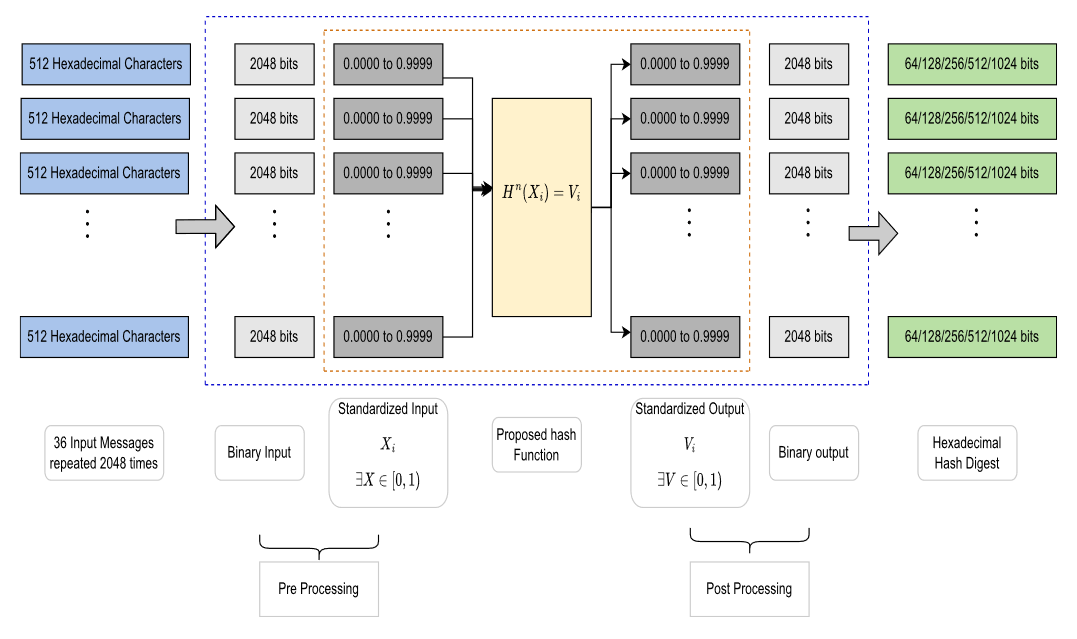From Collatz Conjecture to chaos and hash function
Leveraging Chaotic Systems for Enhanced Hash Functions in Cryptographic Applications
Abstract.
The nonlinear properties of chaos present promising approaches for enhancing cryptographic systems. This study introduces a novel chaos-based hash function leveraging the Collatz Conjecture, sine infinity, and chaos theory. The function, defined as:
\(x_{n+1} = 10M \cdot
\begin{cases}
R_K (f(x_n) \sin(g(x_n)) + x_n) & \text{if } x_n \in (R - Z) \\
\left(\frac{x_n}{2^j}\right) \cdot P_{2j+1} & \text{if } \text{mod}(x_n, 2^j) = 0, 3 \leq j \leq 5 \\
\left(R(f(x_n)) \sin(g(x_n))\right) + x_n & \text{if } \text{mod}(x_n, 2^2) = 0 \\
\left(\frac{x_n}{2}\right) \cdot P_2 + 1 & \text{if } \text{mod}(x_n, 2) = 0 \\
x_n \cdot P_{\text{mod}(x_n, NP)} + 1 & \text{if } \text{mod}(x_n, 2) = 1
\end{cases}\)
enhances ergodicity and entropy, crucial for cryptographic applications. Performance evaluations indicate superior collision resistance and uniformity compared to SHA-2 and SHA-3. The proposed hash function achieves an average hamming distance of 50.33\% and exhibits robust security properties under various datasets and conditions.
Illustration of the proposed experimental design.

